Welcome to PART 2 of our 16×24 run-in shed project! In this stage, we’re taking things to the next level by constructing the roof and adding those crucial finishing touches that bring the entire structure together. From securing the purlins and installing the roofing panels to adding trims and kickboards, this is where the shed transforms from a basic frame into a fully functional and polished space. Let’s roll up our sleeves and get it done!
When buying the lumber, you should select the planks with great care, making sure they are straight and without any visible flaws (cracks, knots, twists, decay). Investing in cedar or other weather resistant lumber is a good idea, as it will pay off on the long run. Use a spirit level to plumb and align the components, before inserting the galvanized screws, otherwise the project won’t have a symmetrical look. If you have all the materials and tools required for the project, you could get the job done in about a day.
Projects made from these plans
16×24 Run in Shed Roof Plans
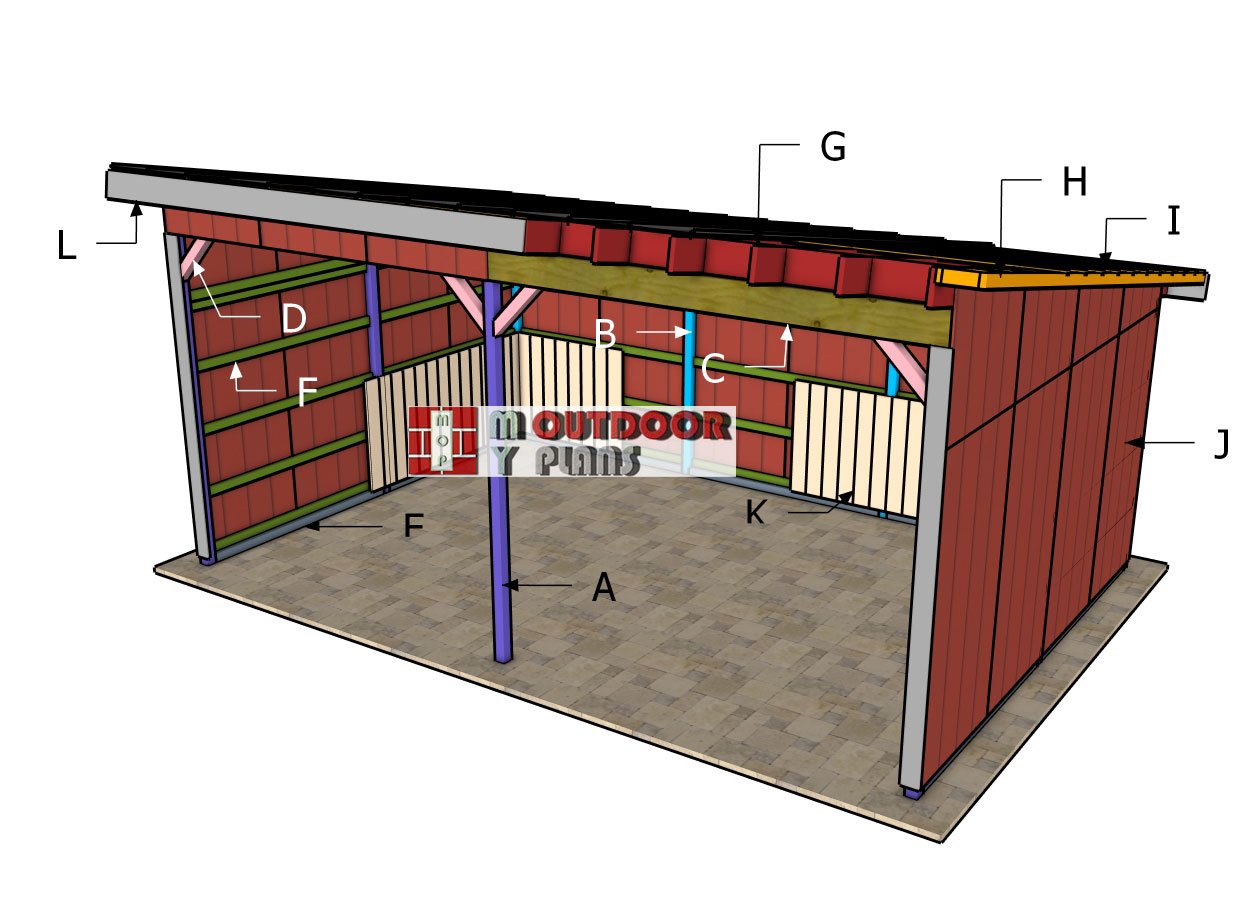
Building-a-16×24-run-in-shed
Cut and Shopping Lists
H – 4 pieces of 2×4 lumber – 220″, 26 pieces – 9″ OVERHANGS
I – 15 pieces of 2×4 lumber – 132”, 15 pieces – 180″ PURLINS
J – 14 pieces of 5/8″ T1-11 siding – 4’x8′, 6 pieces – 9 1/2″x48″, 2 pieces – 17 5/8″x48″, 2 pieces – 25 5/8″x48″, 2 pieces – 33 5/8″x48″, 2 pieces – 41 5/8″x48″ SIDING
K – 92 pieces of 1×8 oak boards – 48″ KICKBOARDS
K – 2 pieces of 1×10 lumber – 120″, 2 pieces – 100″, 2 pieces – 132 3/4″, 2 pieces – 180 3/4″ ROOF TRIMS
Tools
![]() Hammer, Tape measure, Framing square, Level
Hammer, Tape measure, Framing square, Level
![]() Miter saw, Drill machinery, Screwdriver, Sander
Miter saw, Drill machinery, Screwdriver, Sander
![]() Safety Gloves, Safety Glasses
Safety Gloves, Safety Glasses
Time
Related
- PART 1: 16×24 Run in Shed Plans
- PART 2: 16×24 Run in Shed Roof Plans
- 16×16 gable shed plans
STEP 4: Overhangs
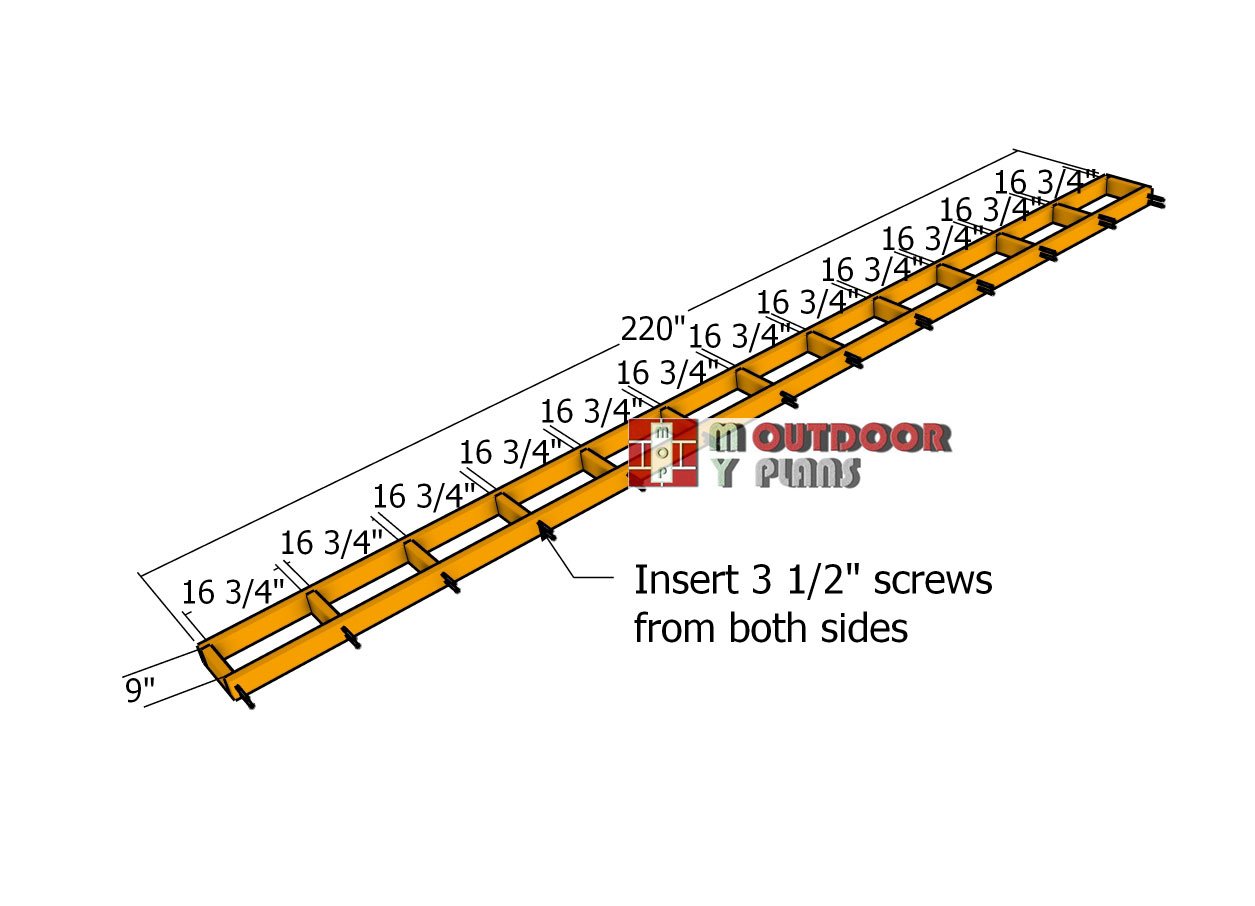
Assembling-the-Overhangs
Next, it’s time to build the side overhangs for the large post and beam construction. Use 2×4 lumber and cut the components to 220″ for the long beams and 9″ for the blockings. Lay everything out on a level surface for easy assembly.
Position the blockings between the rafters, ensuring even spacing. Drill pilot holes through the rafters to prevent splitting, and secure the blockings with 3 1/2″ screws. These overhangs will add both structural integrity and a clean, finished look to your project.
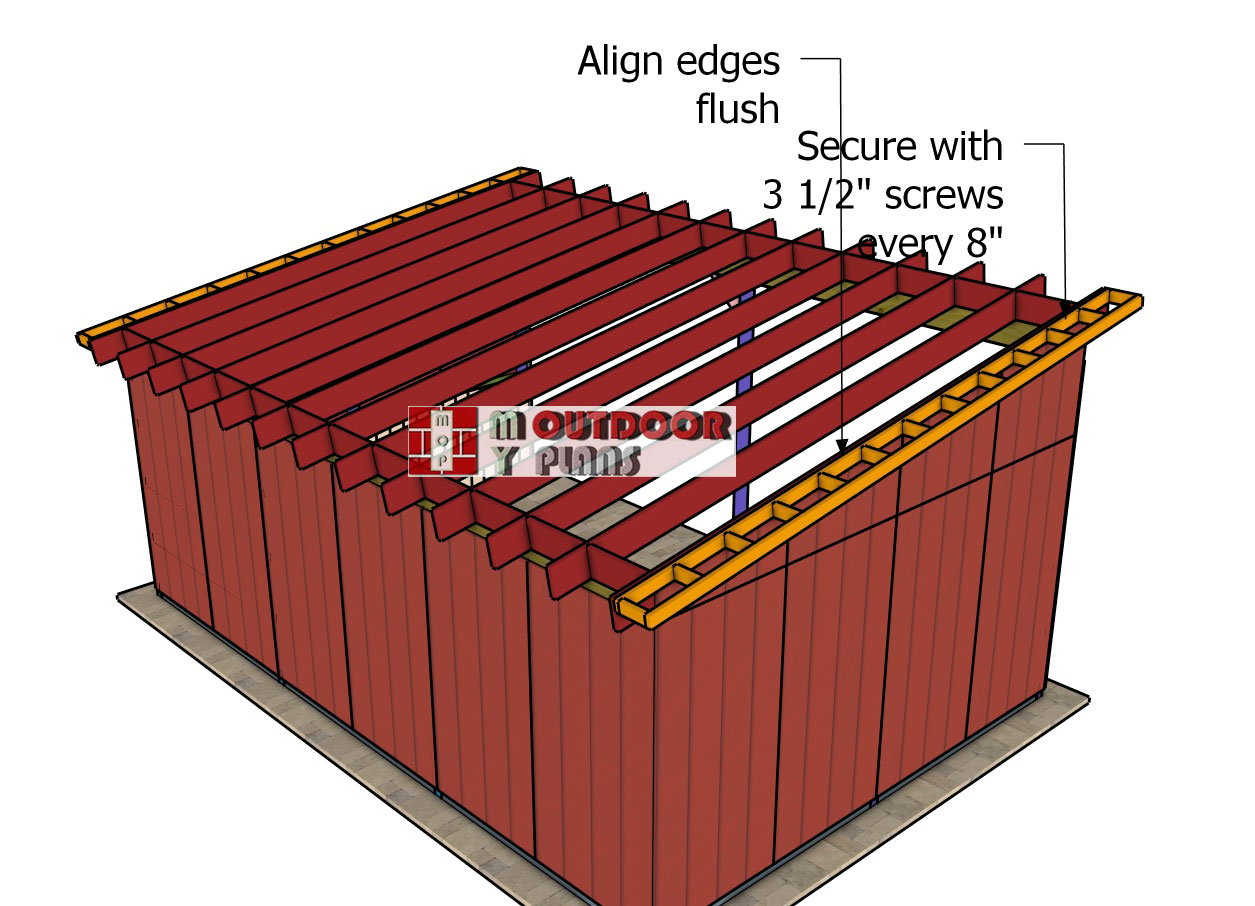
Fitting-the-side-overhangs
Attach the side overhangs to the shed, aligning the edges perfectly with the top of the roof structure for a clean, polished look. Secure the overhangs into place with 3 1/2″ screws, spacing them approximately every 8″ along the roof frame. Take your time to ensure everything is straight and flush, this step not only enhances the appearance but also reinforces the overall structure. Let’s get it done!
STEP 5: Siding

Back-wall-siding
With the main structure of the shed complete, it’s time to attach the exterior panels. You have several options here—metal panels, OSB, plywood—but for this plan, we’re going with 5/8″ T1-11 siding sheets. Position the siding sheets carefully, ensuring the edges align perfectly.
Secure them using 8d nails, spacing them 6″-8″ apart along the edges and 12″ apart in the center of each panel for a strong, durable finish. Take your time to ensure everything is flush and sturdy—this step brings your shed to life!
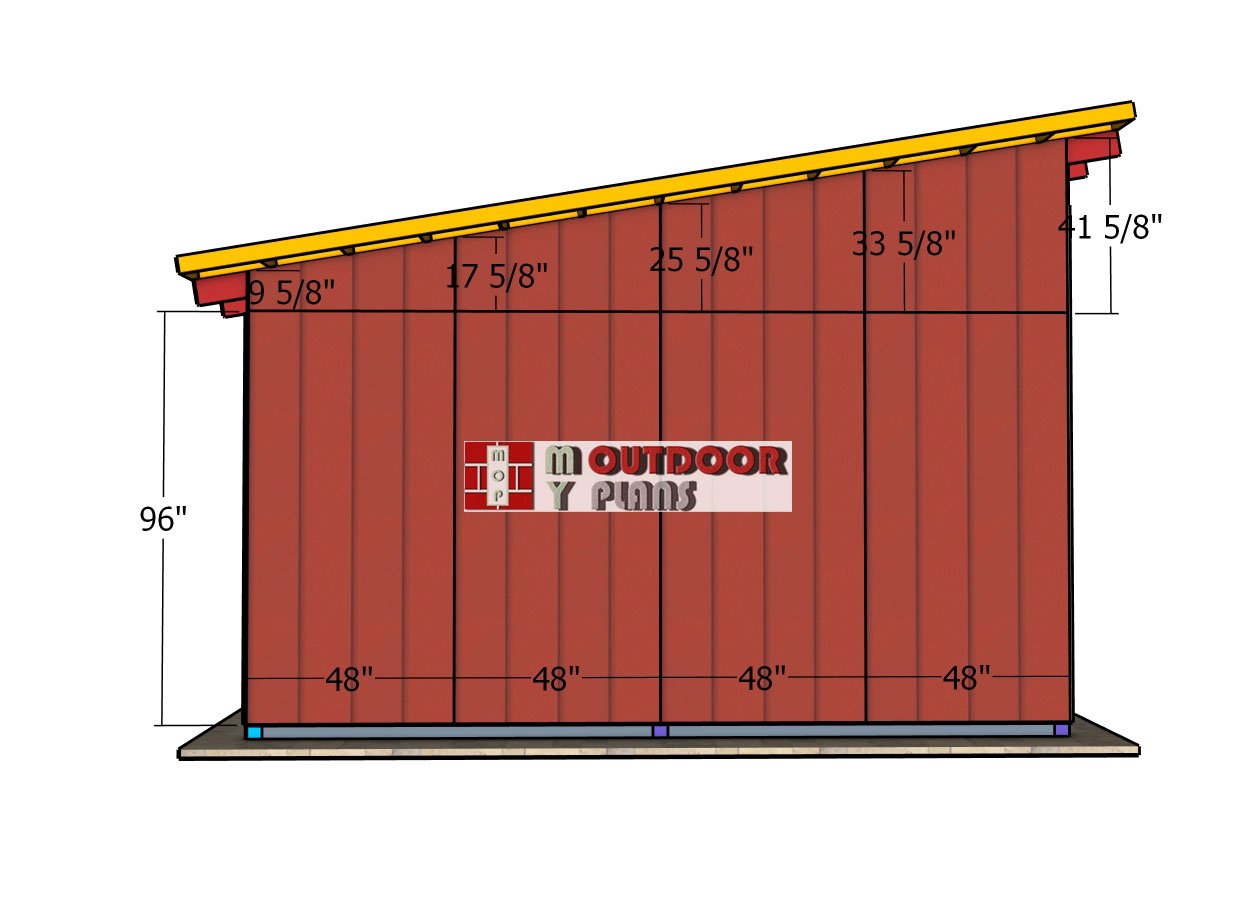
Side-wall-panels
Attach the siding sheets to the sides of the shed, ensuring a snug and precise fit. For the top panels, measure and cut them at an angle to match the roof pitch. Once cut, position them carefully and secure all the siding sheets in place using 8d nails. Space the nails 6″-8″ along the edges and 12″ in the center of each panel for a strong and clean finish. This step not only completes the look of your shed but also protects it from the elements.
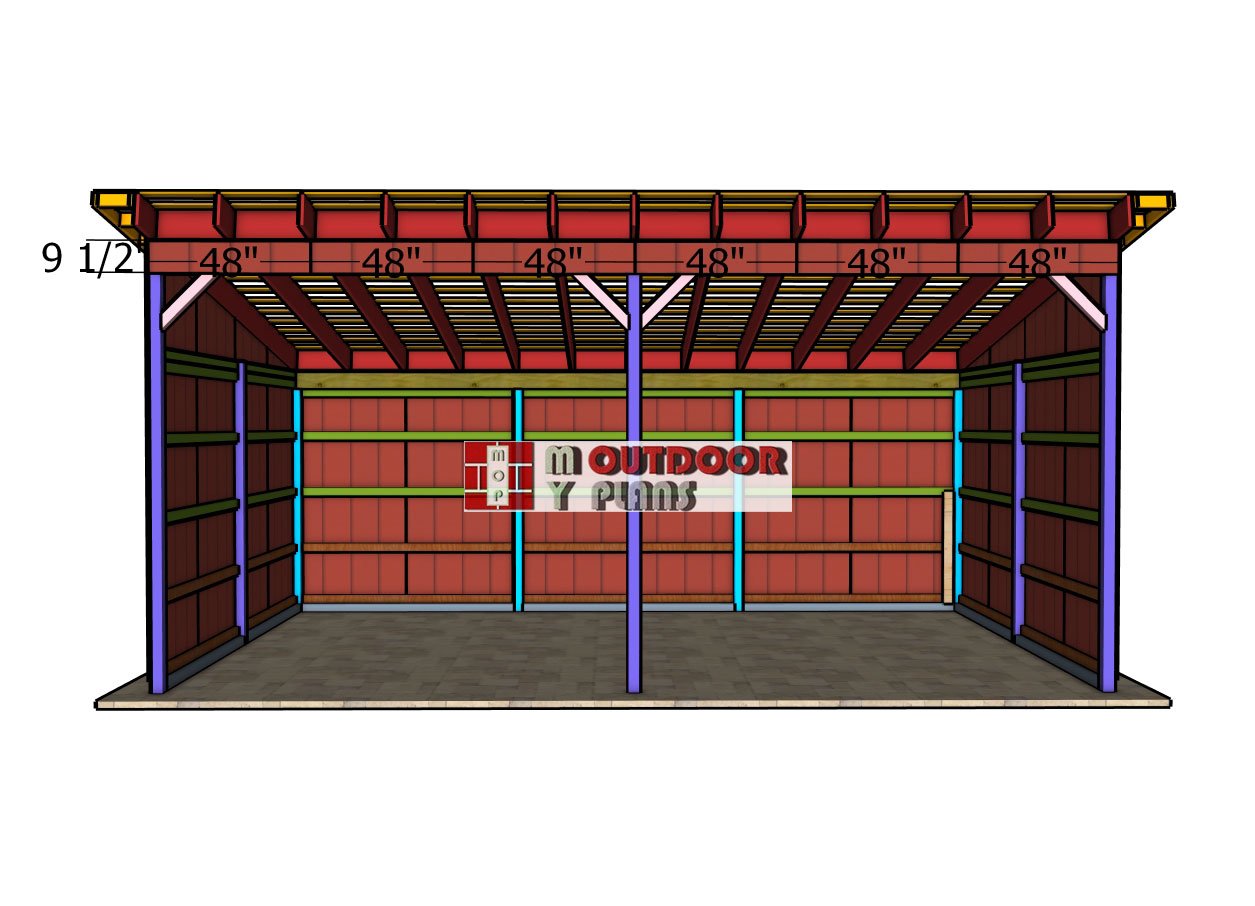
Front-wall-panel
Attach the siding pieces to the front of the shed, as well.
STEP 6: Roofing
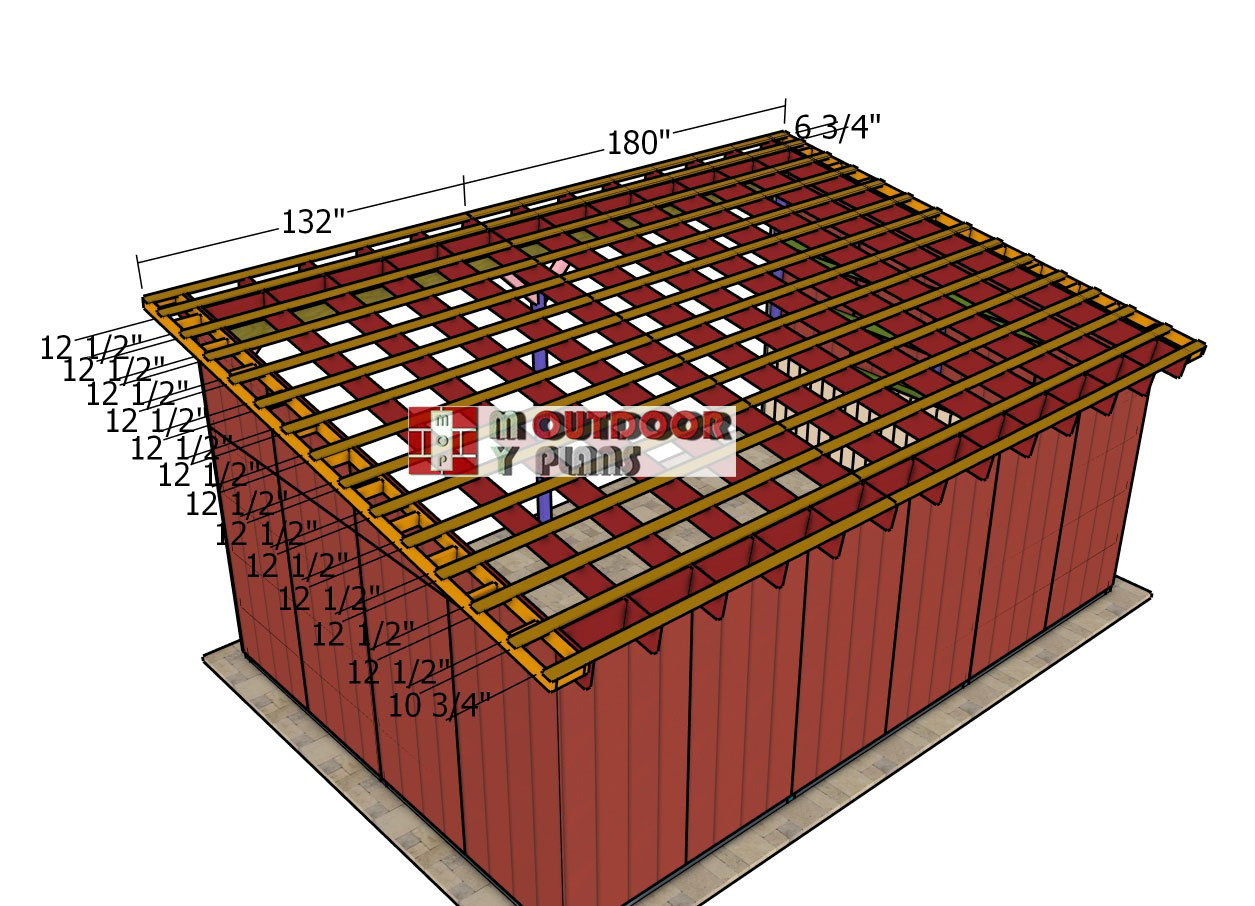
Attaching-the-purlins
Now let’s head back to the lean-to roof to attach the 2×4 purlins. Position the purlins evenly, spacing them 16″ on center for proper support and alignment. Once in place, secure each purlin to the rafters using 3 1/2″ screws. Take your time to ensure the purlins are straight and flush, as they’ll provide the foundation for the roofing material. With this step complete, your roof framework will be ready to go!
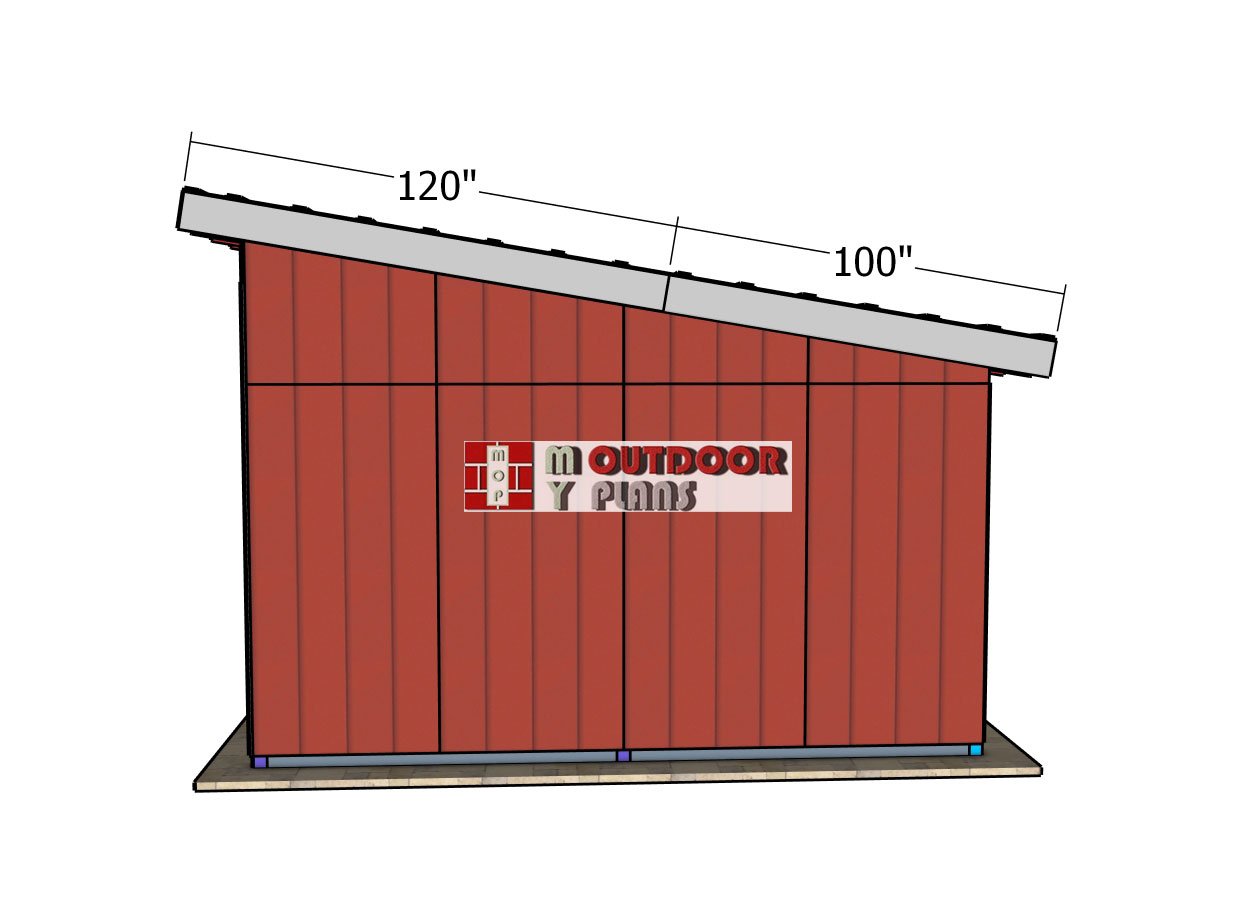
Side-roof-trims
Attach the 1×10 trims to the sides of the roof for a clean and polished finish. Carefully align the edges for a seamless look, ensuring everything is straight and flush. Once aligned, secure the trims in place using 2 1/2″ screws. This step not only enhances the appearance of the roof but also adds an extra layer of protection. Let’s wrap it up with style!
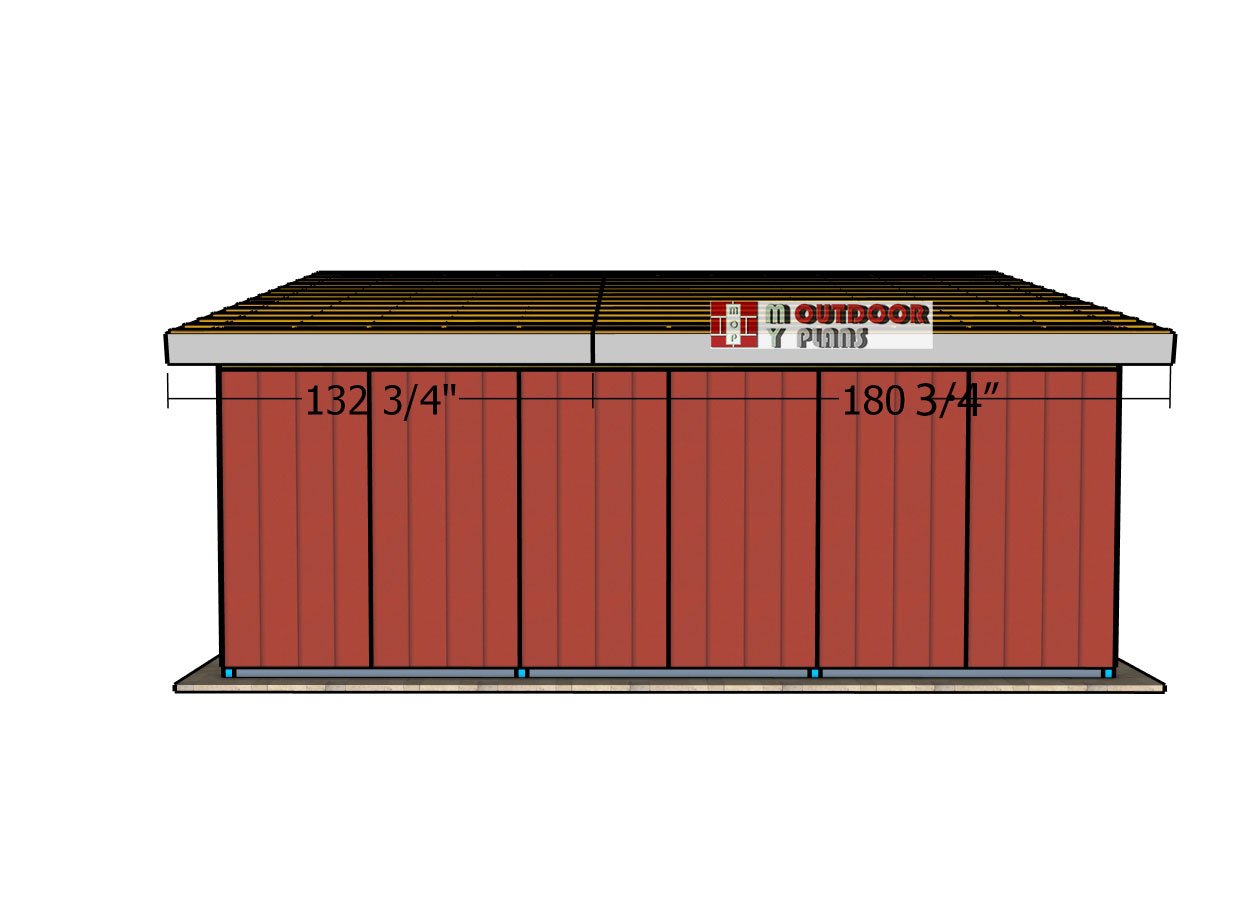
Front-and-back-roof-trims
Next, attach the front and back trims to the roof of the shed to complete the finishing touches. Align the trims carefully with the edges of the roof, ensuring a straight and seamless fit. Secure them into place using 2 1/2″ screws, just like with the side trims.
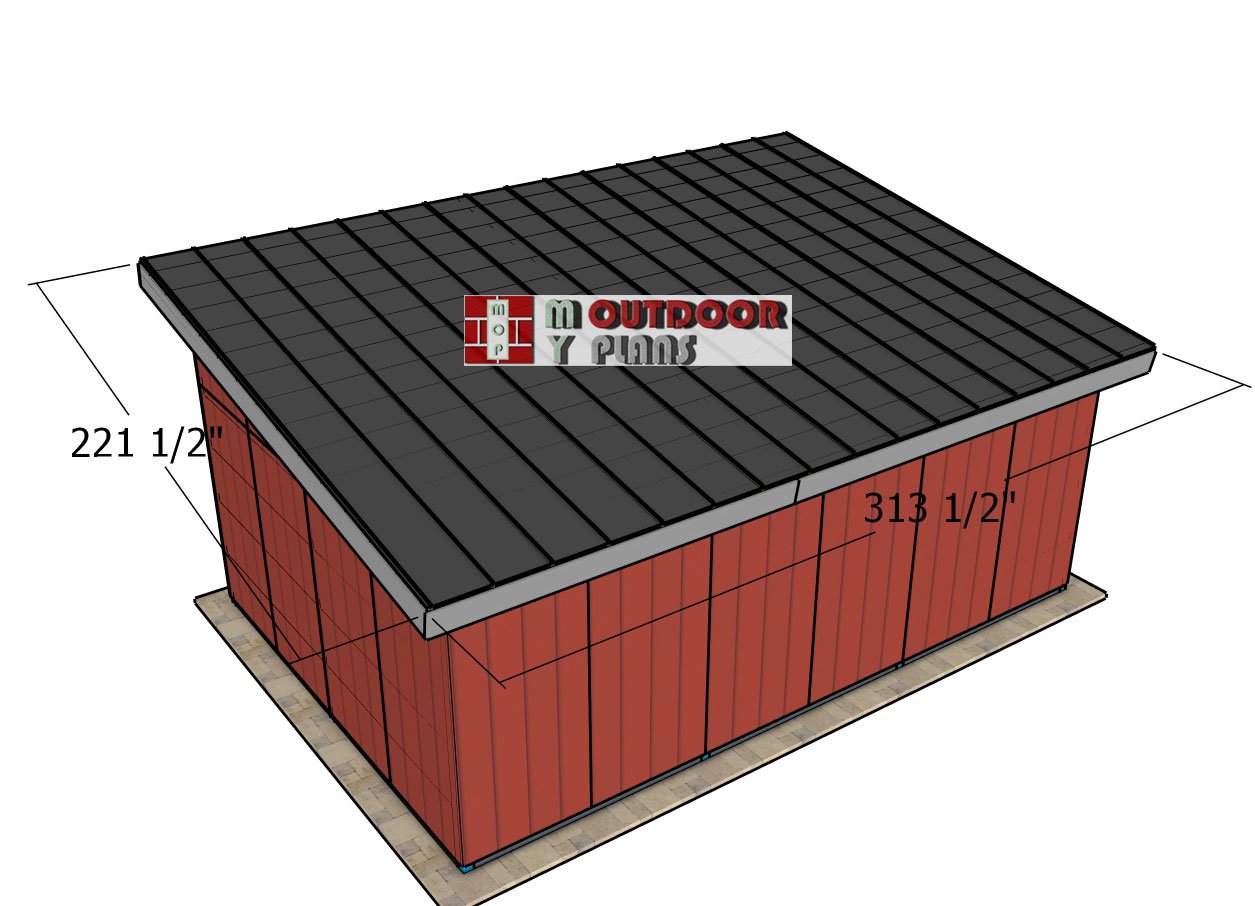
Fitting-the-roofing-sheets
Installing metal roofing on your lean-to run-in shed is a straightforward process that adds durability and weather protection. Start by attaching drip edges along the eaves and rake edges to direct water away from the structure and protect the roof decking.
Lay the metal panels starting at one end of the roof, overlapping each panel by at least one rib. Secure them with self-tapping screws equipped with rubber washers, placing screws along the ridges and edges for a watertight seal. Continue across the roof, ensuring each panel is square and aligned.
STEP 7: Kickboards
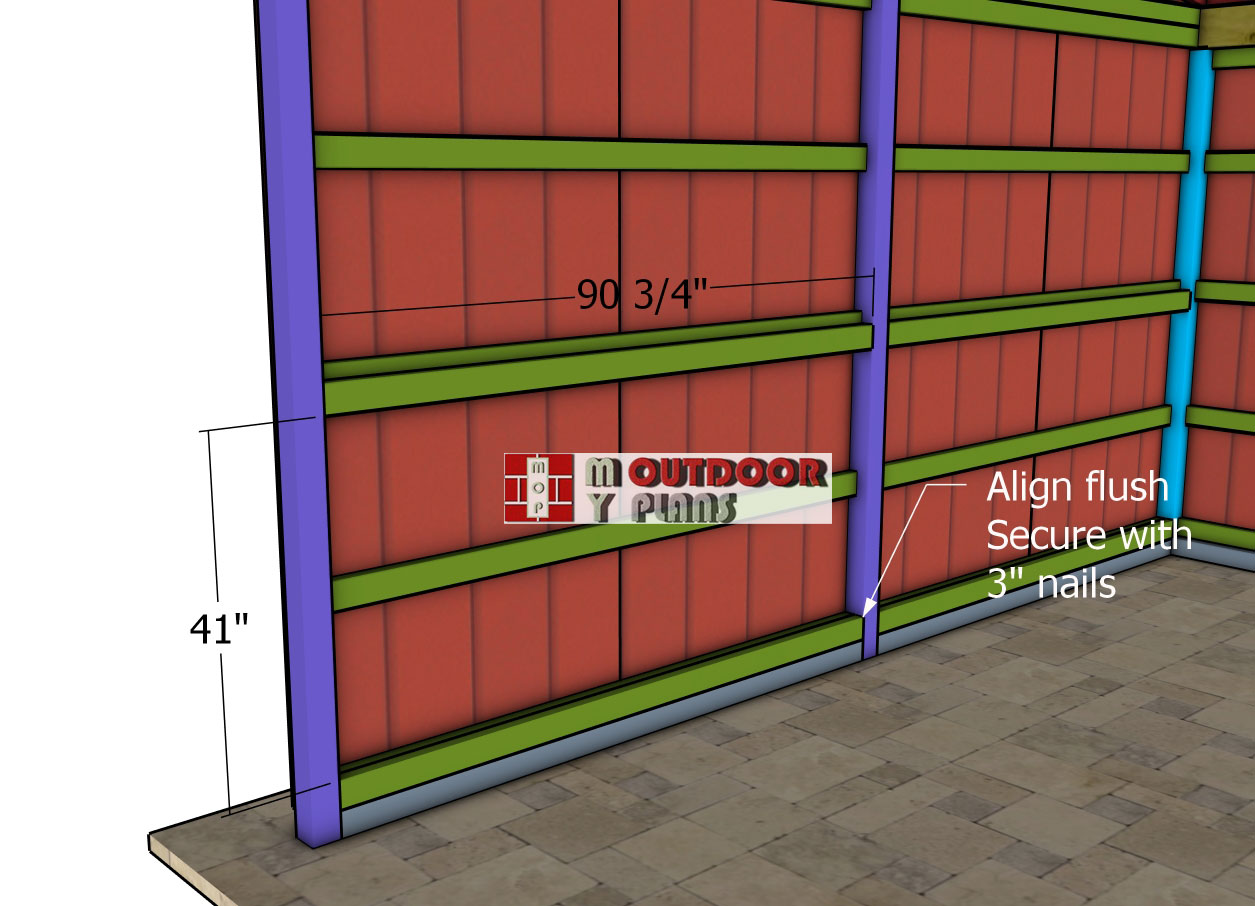
Kickboard-side-supports
Use 2×4 boards as supports for the kickboards to give your shed a sturdy and functional base. Secure the supports to the posts by driving 3″ nails at an angle, ensuring a tight and secure fit. If you prefer screws, drill pocket holes at both ends of the 2x4s and attach them with 2 1/2″ screws. Either method will work well, so go with the one that suits your tools and style best.
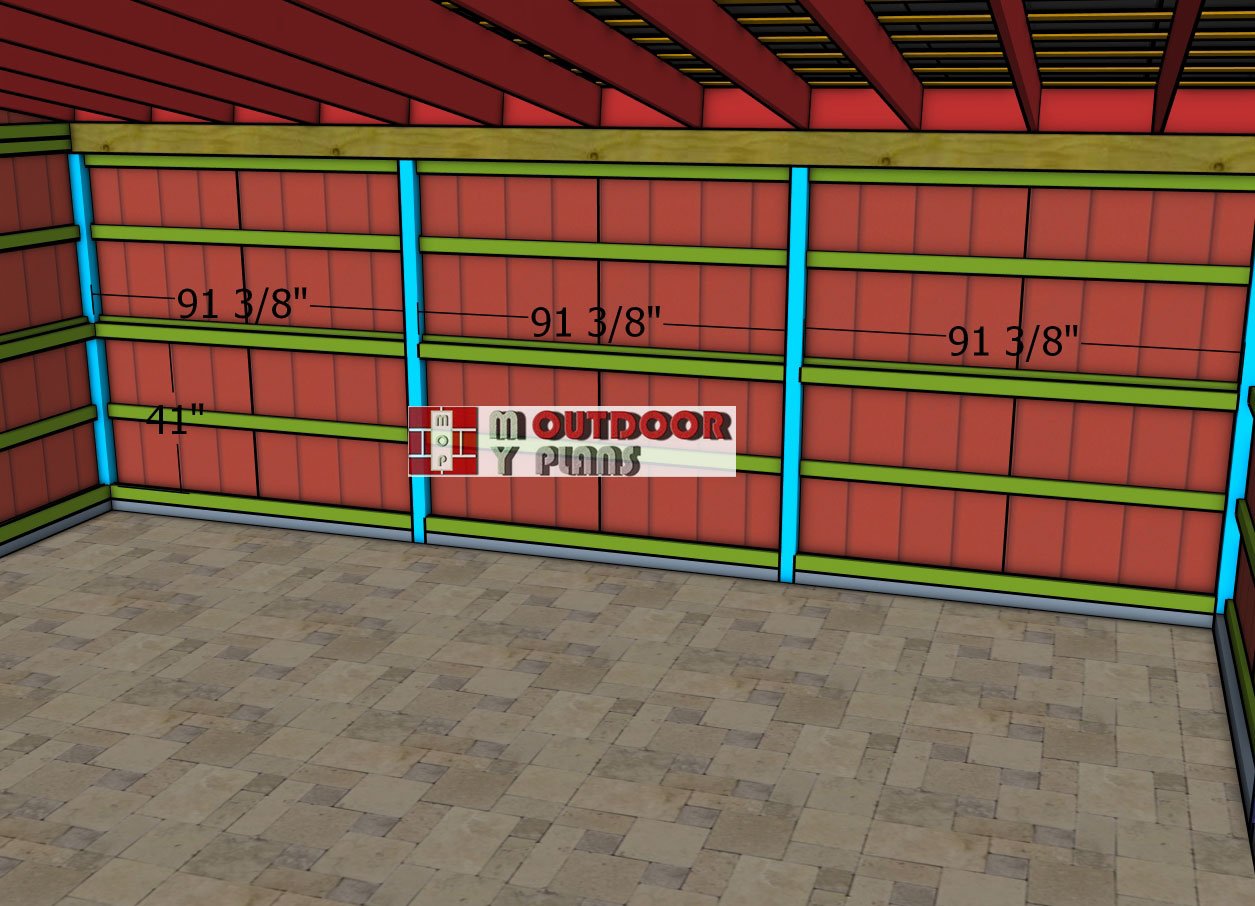
Back-kickboard-supports
Repeat the same process for the back of the run-in shed. Attach the 2×4 supports for the kickboards to the posts using 3″ nails at an angle or 2 1/2″ screws with pocket holes, just as you did for the front. Take your time to ensure everything is aligned and securely fastened for a clean and sturdy finish.
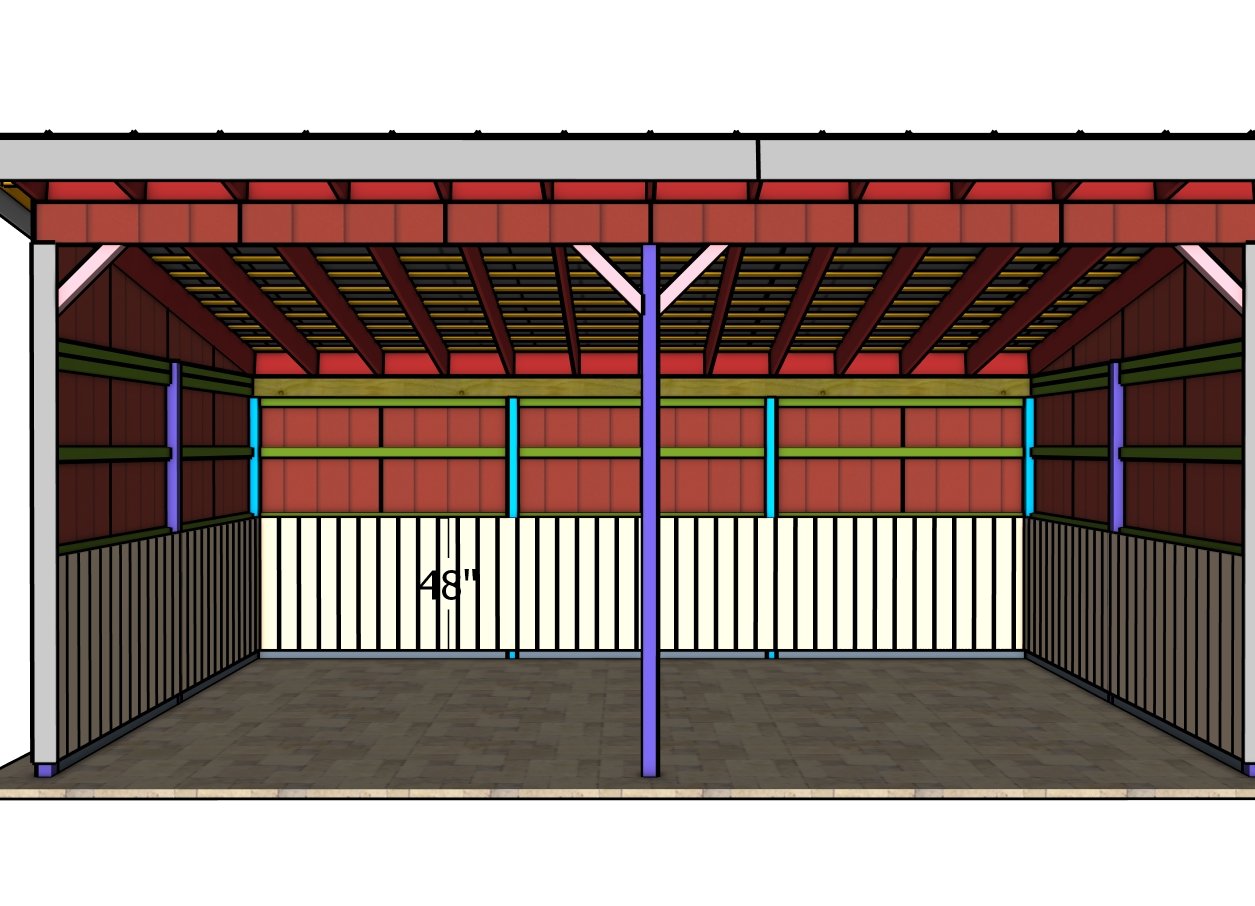
Setting the kickboards
Attach the 1×8 oak kickboards to the supports using 8d nails. Align the boards carefully to ensure a snug and even fit along the base of the structure. Nail them securely into place, spacing the nails evenly for a clean and professional finish. These kickboards not only add a polished look but also provide extra durability to protect the structure from wear and tear.
STEP 8: Finishing Touches
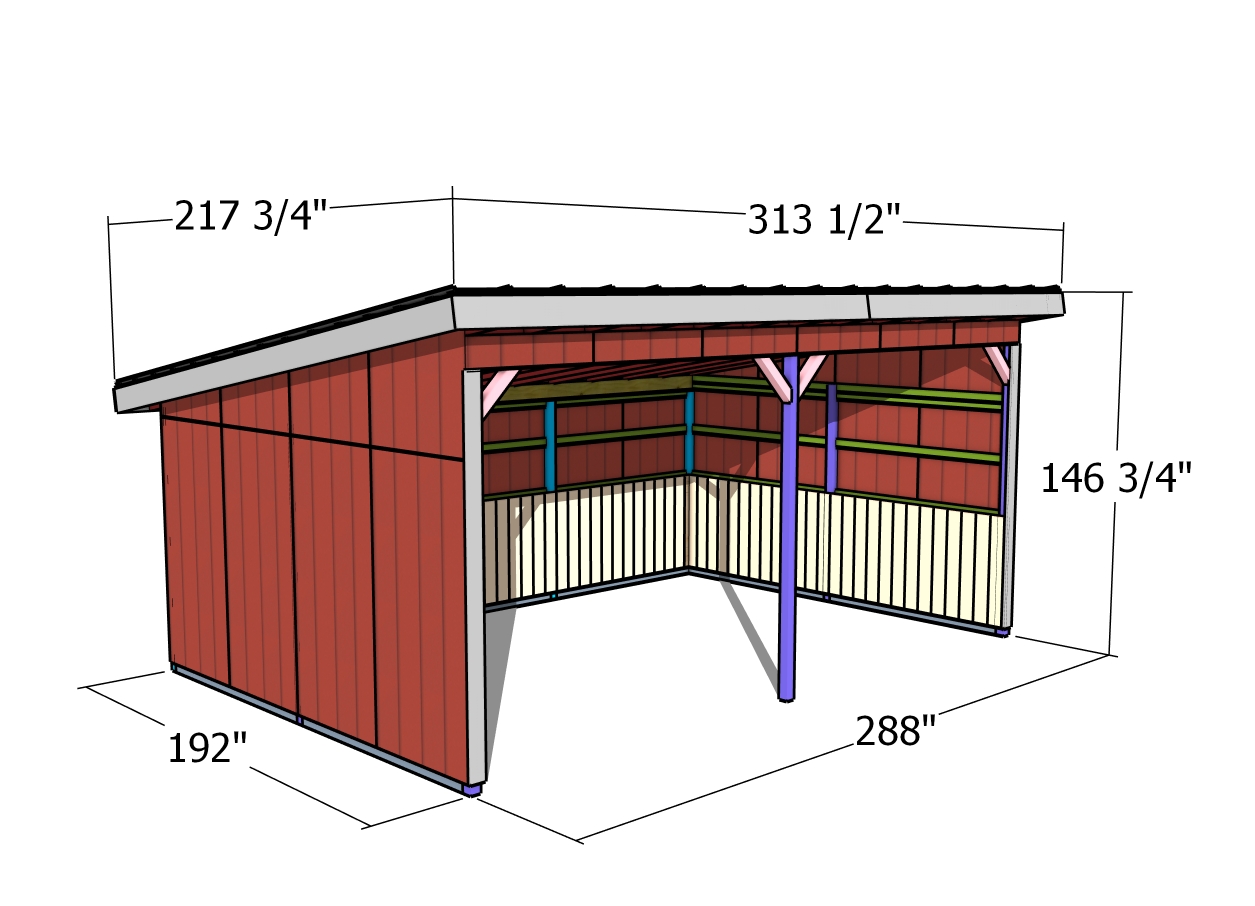
16×24 run in shed – dimensions
With the main structure complete, it’s time to focus on the finishing touches that bring everything together. Start by filling any visible nail or screw holes with wood putty for a smooth, seamless look. Once the putty dries, give the entire structure a light sanding to remove any rough edges or splinters.
This project is incredibly versatile and practical, making it a perfect addition to your property. Whether you’re using it to shelter livestock, store firewood, or keep equipment protected from the elements, the sturdy design ensures it can handle a variety of needs. The raised kickboards and weather-resistant siding provide durability and protection, while the open design allows for proper ventilation. It’s a functional, multi-purpose structure that’s built to last and adapt to your specific requirements.

How to build a large run in shed
Depending on your style, you can apply a stain to enhance the natural beauty of the wood or paint it to match your existing décor. Don’t forget to seal the wood with a weather-resistant finish to protect it from the elements and extend its lifespan.
If you enjoyed this build, be sure to check out PART 1, where I walk you through the step-by-step process of constructing the main frame of this shed. It’s the foundation that set the stage for this entire project, and you won’t want to miss those key details!
This woodworking project was about 16×24 run in shed roof plans. If you want to see more outdoor plans, check out the rest of our step by step projects and follow the instructions to obtain a professional result.

